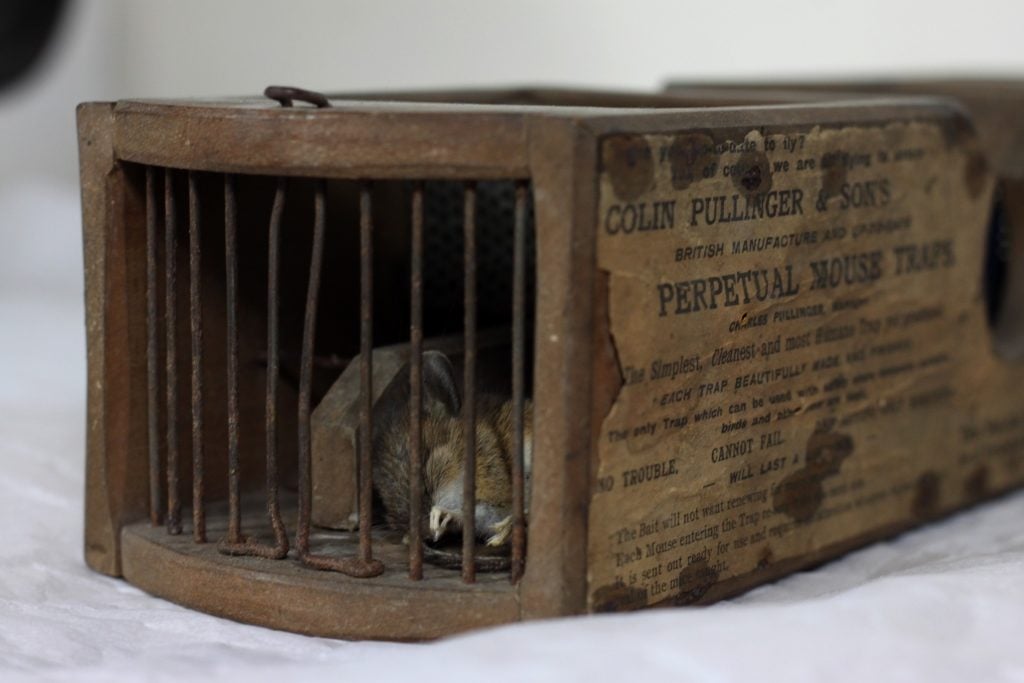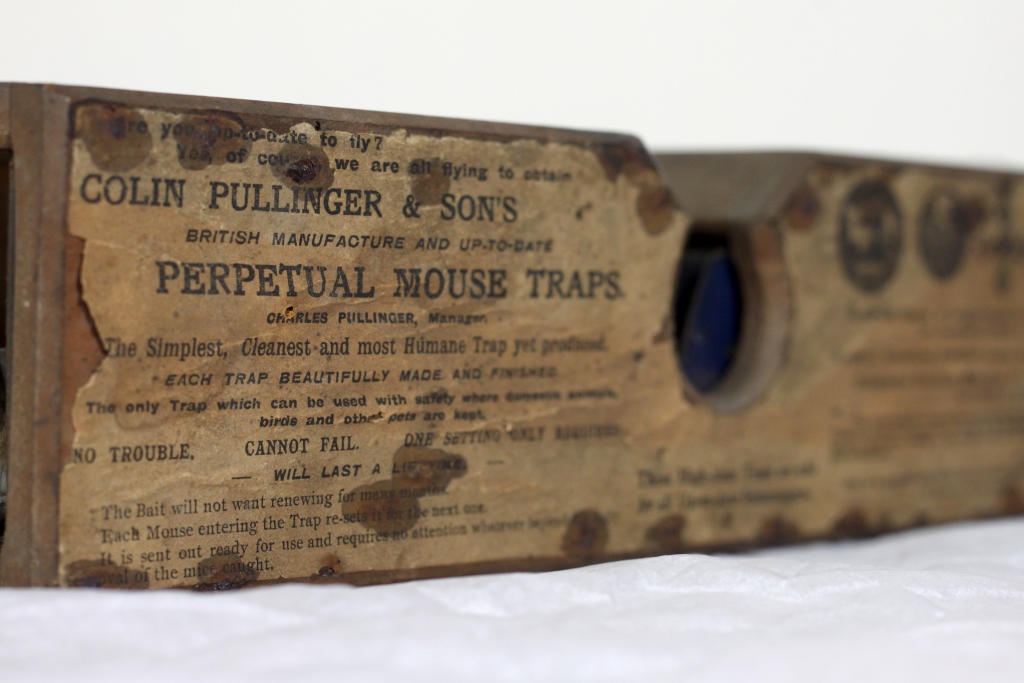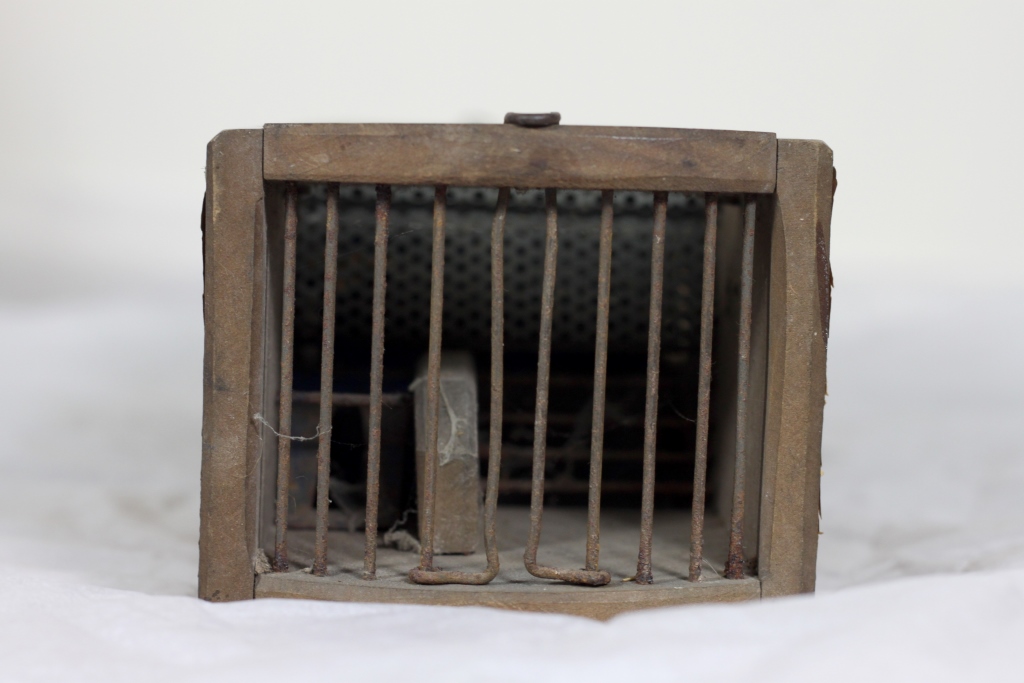Art World
Luckless Mouse Caught in 155 Year-Old Trap on Museum Display
The world's unluckiest mouse or just a prank?

Photo: ©Museum of English Rural Life
The world's unluckiest mouse or just a prank?

Hili Perlson

A mouse trap dating from circa 1861 and on permanent display at the Museum of English Rural Life in Reading made good on its promise that it “will last a lifetime.”
On Tuesday morning, the museum’s assistant curator notified his colleagues, “there appears to be a dead mouse in this mousetrap,” adding, acerbically, “which is not described as being there on the database.”

The trap is aptly described as “Perpetual.”
Photo: ©Museum of English Rural Life.
Museum staff is still confounded as to how the mouse managed to find its demise in an unbaited Victorian trap protected behind impenetrable glass.
“Upon finding itself [in the museum] it would have found the promised land; a mouse paradise laid before it full of straw, wood, and textiles,” a University of Reading blog describes. “Then, out of thousands of objects, it chose for its home the very thing designed to kill it some 150 years ago: a mouse trap.”
The undeniably effective device was manufactured by Colin Pullinger & Sons of Silsey, West Sussex, and its design was patented in 1861. It’s a multi-catch trap with a see-saw mechanism commonly known as a “Perpetual Mouse Trap”–a description it now lives up to in more than one way.

The trap was advertized as lasting a “Lifetime.”
Photo: ©Museum of English Rural Life.
But should the museum be worried about a serious rodent infestation? “Pests are, of course, a perpetual menace in any museum,” the curators clarified in the blog post.
“Our most vulnerable objects have always been cased—such as clothing and leather—the rest of our stored collection made of sturdier wood and metal was only fully glazed over last year.”
Trying to clarify how the unlucky rodent may have gotten trapped, they speculate that it might have snuck in before this glazing, or while construction work was underway.
“This mouse managed to sign its own death warrant before it could do any more damage, the extent of which was only a nibbled label,” the curators write.

The 155-year-old trap claims its latest victim, which might become part of the museum’s display.
Photo: ©Museum of English Rural Life.
The bigger issue at hand right now is deciding over the pest’s fate. And while the museum deliberates on the matter, the mouse is still inside the trap. It is not unlikely that it will be immortalized in this Victorian-trap-turned-tiny-mausoleum.
“One option is a dignified burial, another is to desiccate it or have it prepared to remain as a permanent feature of the mouse trap for our new displays,” they write. “We’ll let you know what we decide.”